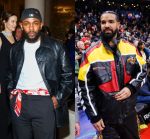Music knows no boundaries in America. It’s the great equalizer among consumers of different ages, languages, races, incomes, genders and geographies. People often find that music is a mirror of and a bridge to an increasingly diverse society. Stevie Wonder was right when she sang that “music is a world within itself, it is a language we all understand; with an equal opportunity for all to sing, dance and clap their hands,” but that sonic and human convergence is increasingly multicultural in a way that makes music fans of all races and ethnicities in the U.S. and abroad feel welcome at the party.
African-American, Asian American, and Hispanic consumers represent the vanguard of musical trends in the U.S. They drive the development of musical taste and they’re readily adopting new ways of listening to music. So, as multicultural consumers continue to pioneer pathways of taste and adoption, companies interested in understanding the future of music would be well served to keep these groups at the top of their engagement lists.
WHO IS THE MULTICULTURAL CONSUMER?
The multicultural consumer is increasingly the American consumer. Since 1990, the share of the U.S. population that identifies itself as African-American, Asian American or Hispanic has grown to 37 from 24%. And according to current U.S. Census projections, these groups will make up a majority of the U.S. population by 2043. When we look at just the consumers under the age of 18, however, U.S. Census projections from 2012 expect the minority-majority tipping point to arrive in just four years.
Learn more about Multicultural music listeners Nielsen and visit www.nielsen.com/africanamericans. Go to the Consumer Corner section and download the report: Listen Up: African-American Consumers and Music.
















